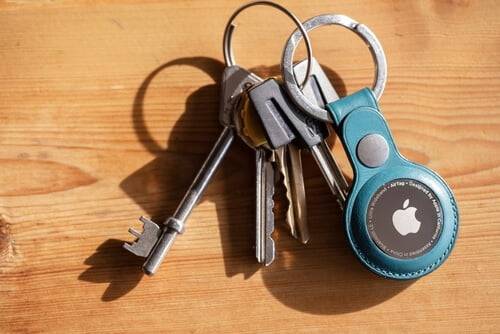Connected tags
Connected beacons (AirTags, SmartTags, Tiles, etc.): what precautions should be taken against malicious acts?
Smart tags can be misused and used illegally, including to track someone without their knowledge. What should you do if you find tags in your belongings that don't belong to you?
Smart tags have been around for years and can locate and recover items they're attached to (like keys, purses, or even wallets). While the technology is useful for finding lost items, there have been numerous media reports suggesting its use could be misused to locate people without their knowledge.
Connected beacons: how do they work?
Connected beacons operate primarily via radio waves or Bluetooth. They communicate regularly with other devices around them (connected objects, phones, computers) and consume very little energy. These beacons rely on a network of connected devices that will detect them via nearby devices and send their location to the beacon's owner, allowing the latter to locate lost objects.
Indeed, the more connected devices there are in a given area, the better the geolocation performance. These beacons are designed to help find lost items indoors or stolen items (like keys) outdoors. They are generally very small (around a few centimeters).
When a mobile phone detects a beacon, its data is encrypted, so the retrieved location can only be read by the beacon's owner using a digital key system. This key changes periodically and is synchronized with the owner's key. This means that only the owner can detect the beacon and thus track its movement.
What is the correct response to use in case of doubt?
Some beacon owners use their beacons to illegally track people's movements without their knowledge.
If you find a tag attached to an object that does not belong to you (bag, pocket, etc.), you will have to use certain reflexes to protect yourself.
Detect connected beacons:
Network tag manufacturers have gone to great lengths to make them invisible yet recognizable.
Below are some examples of the most common models:
To recognize AirTags:
For example, Apple implements various security measures to detect AirTags.
If you have an iPhone: You'll receive a notification when an AirTag you don't own is transferred within the specified time period. This feature will allow you to connect to your AirTag to make calls and find each other more easily.
(For more information, please visit Apple's website.)
If you have an Android smartphone:
You can use a dedicated app to detect your AirTag (e.g., Tracker Detection available in the Google Play Store). However, this solution requires the app to be actively running, so only do this if you're already unsure. If you don't have this app but have the latest version of Android, you'll automatically receive a notification when an AirTag disconnected from its owner has been present for a specified period of time.
You can set your AirTag to make a sound to identify your location without your knowledge. The latest versions of Android also offer a manual scan feature to see if an AirTag detached from its owner is nearby. Even if you don't have a smartphone, the AirTag will beep to indicate its location if it's too far from its owner for a certain period of time (8 a.m. to midnight).
For other connected tags (smart tags, tiles, etc.):
Owners of iPhone or Android smartphones can recognize them thanks to an application specially developed by the Connected Beacon brand.
For example, in the Tile app, you can enable the "Scan and Backup" feature. This allows you to see the location of connected Tiles near you.
Unfortunately there is still no universal method to recognize all tags.
Keep your phone updated to take advantage of the latest tag recognition features.
Disable attached tags:
Once a tag is recognized, you have access to the information available about its owner.
Check if the owner has reported it lost and return it to the owner.
When deactivated, the beacon will display its last location on the owner's smartphone. This means that person may know your address. So don't turn off the power at home.
Connected beacons can be used in busy public places (e.g. bars or restaurants).
To deactivate the beacon in a safe location, simply remove the battery.
For example :
For the AirTag, you'll need to press the cover and turn it counterclockwise to open it and remove the battery. For the slab, you'll need to gently push the cover and slide it to the right, then use a paperclip to remove the battery. For smart tags, you'll need to insert a thin object into the groove to open the tag and remove the battery.
Filing complaints with the police:
Tracking a person using a connected beacon without their consent constitutes a criminal offense (article 226, art. 1 of the Criminal Code), punishable by one year of imprisonment and a fine of 45,000 euros.
These fines are increased if the offense is committed by the victim's spouse or partner or a partner linked to the victim through a civil partnership (2 years' imprisonment and a €60,000 fine).
To protect yourself:
- File a complaint – Ministry of Justice
- Apple's instructions for disabling the tag – Apple
- InSamsung instructions for disabling the beacon – Samsung
- Tile instructions for disabling the beacon – the Tile app
To learn more:
- A decentralized, privacy-by-design location service between devices – LINC
- All watched, all watching – LINC
Reference texts:

